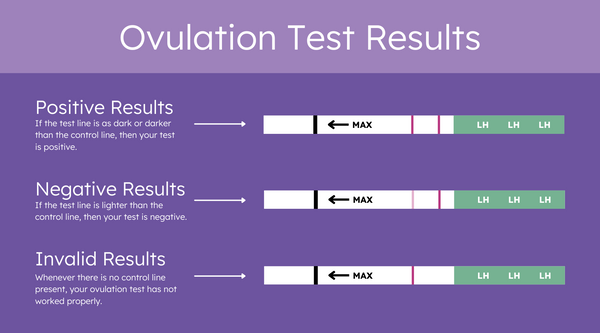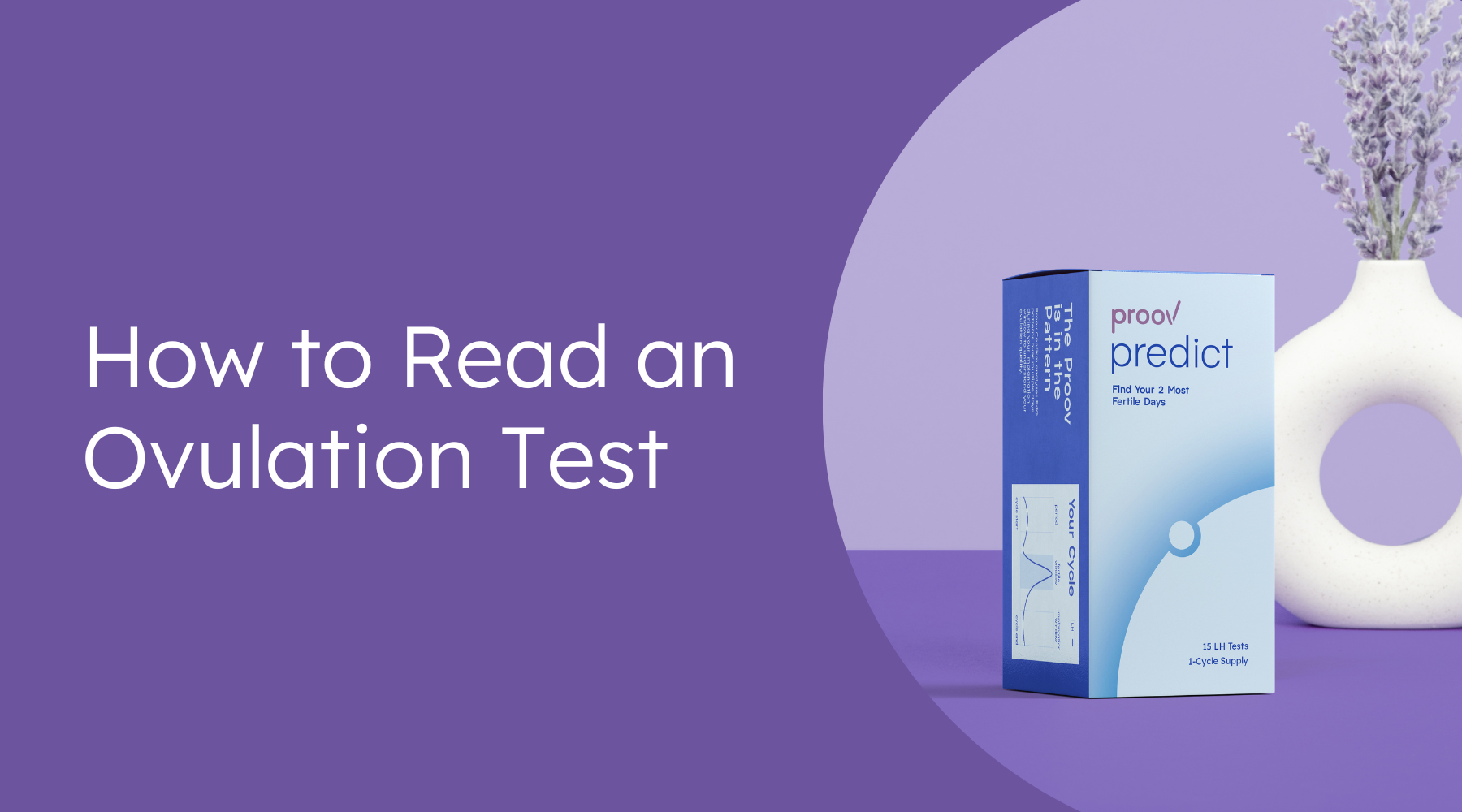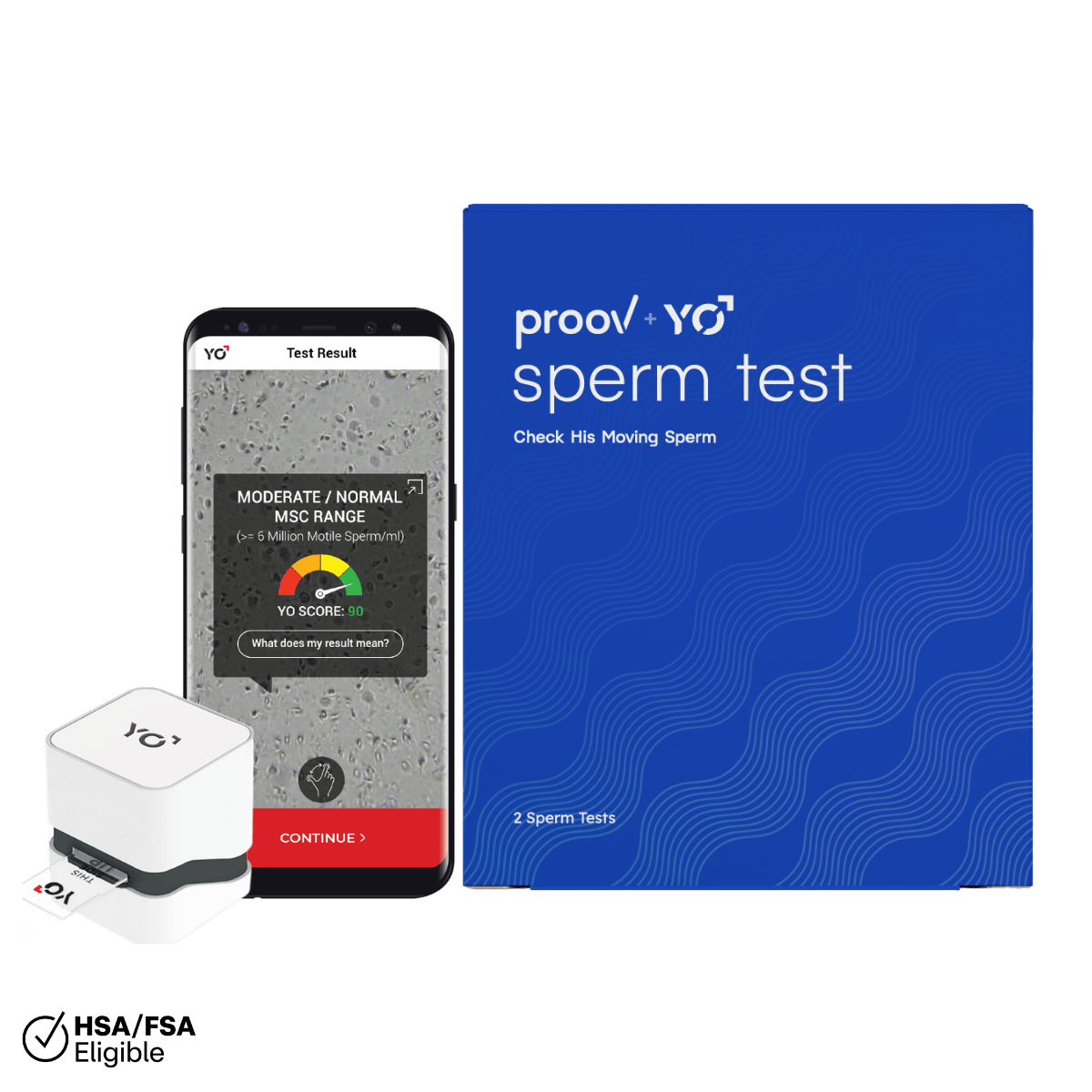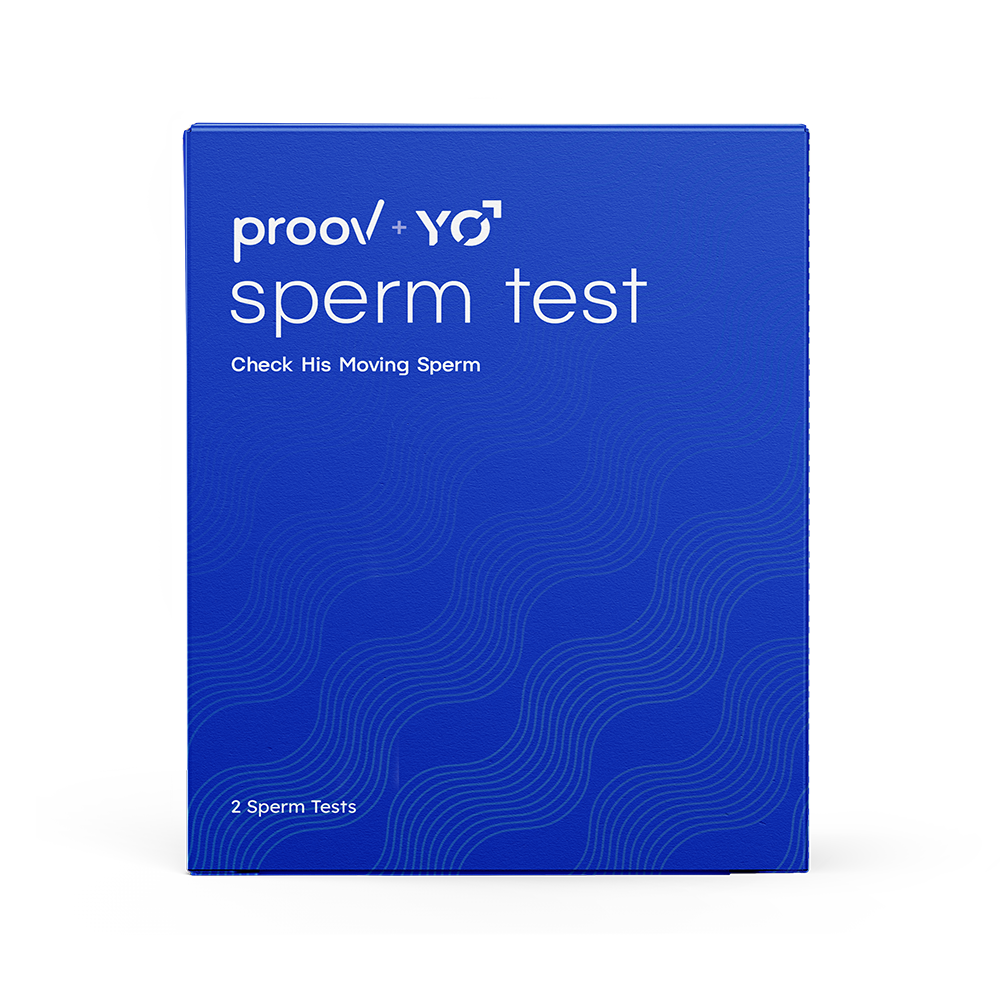Ovulation tests (also known as ovulation predictor kits or OPKs) are great tools to help you on your trying-to-conceive journey. They’re simple at-home urine tests that measure luteinizing hormone (LH) to help you identify the timeframe when you’re most likely to ovulate — so you know the best days to try. The result: a better shot at getting pregnant faster!
Understanding Ovulation & Its Significance in the Conception Journey
If you’re trying to get pregnant, at this point you probably know just how important ovulation is to your journey to pregnancy. Ovulation is the event in which the ovary releases a mature egg so that it can be fertilized by sperm, conception can occur, and pregnancy can begin. Without ovulation, getting pregnant isn’t possible.
Ovulation only occurs once per cycle, about halfway through. And no, halfway through your cycle doesn’t always mean on cycle day 14! This is a common misconception based on the average cycle length of 28 days; if your cycle is longer or shorter than 28 days, you likely won’t ovulate exactly on cycle day 14.
So if ovulation is really that important to getting pregnant, but it doesn’t always consistently happen on the same day, what can you do? Track ovulation, of course! This is where an ovulation test comes in.
Ovulation Test Facts & Basics
First things first, traditional ovulation tests are used to predict ovulation and measure a hormone called luteinizing hormone (or LH). LH is the hormone that surges right before ovulation and triggers the ovary to release an egg.
But, as technology has advanced, there are other tests that can predict ovulation and measure other hormones. Let’s dive in!
Are all ovulation tests the same?
Yes and no. All ovulation tests or OPKs basically do the same thing: they measure LH in urine. But with more than 50 such options on the market, you’ve got plenty of choices. If studying up on all the brands seems overwhelming, don’t worry: I tried more than a dozen and share everything I learned in this article. (Yes, we’re really into testing at Proov!)
Proov Predict & Confirm kits are an especially convenient way to test because they include easy-to-use LH tests and PdG (progesterone metabolite) tests in one product. That means you can predict timing for ovulation and follow up later in your cycle to confirm that successful ovulation actually occurred.
This two-step method not only helps you know the best time to try, but also helps you rule out any unexpected issues with ovulation and get set up for success. Since studies show that ovulatory disorders are the number-one cause of infertility, predicting and confirming successful ovulation is key.
For people who love getting as much information as possible, we also recommend Proov Complete — our most advanced fertility testing system. While typical ovulation tests measure LH to identify a 1-2 day fertile window, Proov Complete looks at all four major cycle hormones to identify an even longer fertile window of up to 6 days, and confirms successful ovulation by measuring PdG.
How do you read an ovulation test?
Ovulation test technology is similar to at-home pregnancy tests: you dip a test strip in urine, wait a while, and watch for your results to show up as lines on the test results window on the strip. (Always follow your test’s instructions carefully, testing at the right time of day as directed and allowing your test strip to develop for the specified number of minutes.)
Similar to an at-home pregnancy test, a positive ovulation test will show two lines. The first line, often pink, is the “control line.” This indicates the test was used correctly and is working.
The second line or “test line” represents the positive result. If this line is as dark or darker than the control line, then your test is positive. That means ovulation is expected in the next 12-36 hours, and now is a great time to try for a baby.

Do I need a special device to read an ovulation test?
Some brands do market fertility hormone tests that require costly extra devices, but they’re usually not necessary. Most standard ovulation tests can be read by eye.
Top-quality OPKs like Proov Predict also work with an app on your phone for goof-proof scanning and results — and that’s what we recommend. Although Proov Predict test strips can also be read by eye, the free Proov Insight app gives reliable readings and tracks your cycle data for you. Plus you get additional insights and tips to help you get pregnant fast.
If you choose to use a more comprehensive at-home hormone test like Proov Complete, you will need the Proov Insight app to read and interpret your results, as tests in this kit cannot be read by eye.
Reading your test with an app is great because it takes away any guesswork. Do be careful, though, to scan your test on a plain flat surface in good lighting with no harsh shadows falling across the results window. This will ensure you get the most accurate results.
Interpreting Ovulation Test Results
It’s normal for urine to contain a low level of luteinizing hormone (LH) every day. This means it’s likely that your ovulation test will always show two lines. But when LH is low, the test line will be faint, lighter than the control line.
As ovulation approaches, the amount of LH in your urine increases, which means the test line will become darker. Once it’s as dark or darker than the control line, your test is positive and you can rest assured that ovulation is expected in the next 12 to 36 hours.
As soon as you receive your positive result, you’re in your predicted fertile window. Time to get busy!

In fertility hormone testing, are positive results always displayed as two lines?
No, it’s a bit more complicated than that. Since different hormones are measured in different ways, tests don’t all work the same. For instance, when measuring PdG with Proov Confirm — a key step in confirming that successful ovulation actually occurred – the presence of two lines is actually a negative result.
This can get a little confusing, which is why we recommend the Proov Insight app, which works with all Proov hormone tests. Our app makes tracking hormones easy with daily prompts, and scans and interprets your results for you.
What to do if Your Test is Negative
If your ovulation test is negative, it likely means your body just needs a bit more time to get ready to release an egg. Keep testing as directed until you observe a positive result. If you never get a positive ovulation test, we recommend consulting your doctor.
Once you get a positive ovulation test, you no longer need to continue testing LH for that cycle. However, we highly recommend testing PdG with Proov Confirm to confirm that successful ovulation actually occurred. It’s a piece of the fertility puzzle that is often overlooked, and can make all the difference.
Next Steps for Positive Tests
A positive ovulation test means you’re in your fertile window, and ovulation is expected in the next 12-36 hours. Since sperm remain viable inside a woman’s body for several days after intercourse or insemination, right now is a great time to try for a baby.
While it is important to time intercourse during your fertile window, try not to stress about trying multiple times or nailing to-the-minute precision timing. As long as you have intercourse or inseminate a few days leading up to ovulation, you’re still giving yourself a good chance at conception. So do what’s right for you.

Optimizing Conception Chances
Predicting ovulation and timing intercourse or insemination is only a small piece of the pregnancy puzzle. Many factors contribute to your ability to conceive.
After a positive ovulation test, don’t forget to follow up in the second part of your cycle by testing PdG with Proov Confirm — the first and only FDA-cleared at-home test that confirms successful ovulation actually occurred. A recent clinical study showed elevated PdG levels after ovulation (specifically during the implantation window) are correlated to a 75% increase in pregnancy rates!
And don’t forget about your partner either! Issues on the male side can account for up to 30% of infertility cases, so it’s really important to get his swimmers checked. The Proov Sperm Test is FDA cleared and measures his sperm count and motility.












